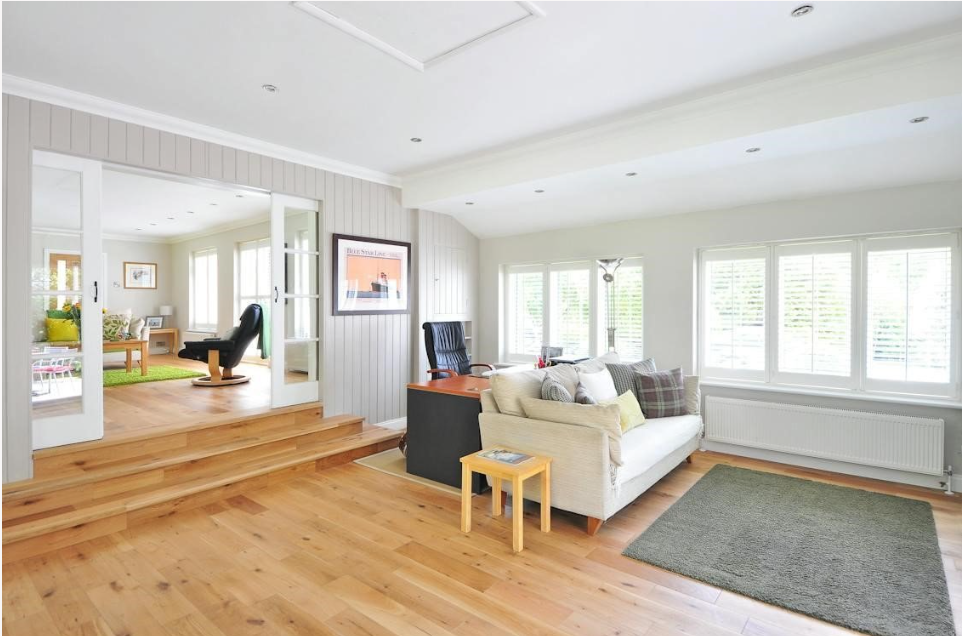Introduction
Hardwood floors are elegant and can enhance the beauty of any room. However, they are prone to scratches, which can diminish their appeal and affect your home's value.
Scratches on hardwood floors can occur from everyday activities such as moving furniture, pets' claws, wearing high heels, or accidentally dropping utensils. But don't worry! Whether you have a small mark or a deep gouge, there are effective solutions available to restore your floors.
In this article, we will explore practical methods to fix scratches on hardwood floors. You will learn:
The characteristics of different wood types and how well they resist wear
Techniques to address both surface-level and deep scratches
Natural remedies that reduce the visibility of scratches
Recommended products specifically designed for wood floor repair
When it's best to seek professional assistance
Steps you can take to prevent future damage and preserve your floors
Get ready to equip yourself with knowledge and resources that will enable you to maintain your hardwood floors' pristine appearance.
Understanding Hardwood Floors
Hardwood floors are highly regarded for their beauty and durability, making them a popular choice for both residential and commercial spaces. They are made up of solid wood pieces, giving them exceptional strength and the ability to be sanded and refinished multiple times throughout their lifespan.
Characteristics of hardwood floors:
Strength: Made from single wood species, these floors can withstand heavy foot traffic.
Longevity: Properly maintained hardwood floors can last for decades.
Natural beauty: Each plank offers unique grain patterns and colors.
Value addition: Homes with hardwood floors often enjoy higher market value.
When it comes to the durability of hardwood floors, the type of wood species used is crucial:
Oak, Maple, Cherry: Known for their strength, these species are less prone to scratches and dents.
Pine: Provides a softer option that may show marks more easily, but adds character to the floor over time.
Compared to other flooring choices, hardwood floors offer specific advantages:
Aesthetics: They provide a warm, inviting look that complements any decor style.
Air quality: Unlike carpets, they do not trap allergens, making them an excellent choice for allergy sufferers.
Acoustics: Hardwood flooring can improve the sound quality in a room by reducing echo.
Maintenance: Cleaning is simple—regular sweeping or vacuuming keeps the floor looking perfect.
With these qualities in mind, it's no wonder why so many people opt for hardwood floors in their homes and businesses.
Types of Scratches on Hardwood Floors
When it comes to hardwood floors, not all scratches are the same. It's important to know the type of scratch on your floor so you can choose the right way to fix it.
1. Superficial Scratches
These are small scratches that only affect the surface of the floor, not the wood itself. They might look like scuffs or shallow cuts and can usually be fixed by buffing or using a touch-up marker.
2. Deep Scratches
Deep scratches are more serious than superficial ones. They go into the wood and need a stronger fix. You can feel these scratches when you run your hand over them, and they may even have rough edges.
To check how bad a scratch is:
Run your finger over it – if it's smooth and you can't feel it, it's probably superficial.
If you can fit your fingernail into the scratch, it's deep.
Look at the scratch in bright light – deeper ones will make a shadow because they're lower down.
Knowing whether a scratch is superficial or deep helps you decide how to fix it – from an easy DIY job to a bigger refinishing project. Before you do anything to repair your hardwood floor, figure out what kind of scratch it is first.
In the next section, we'll go through some do-it-yourself solutions for each type of scratch and how you can bring your hardwood floors back to their original beauty.
DIY Solutions for Superficial Scratches
When you notice superficial scratches marring the finish of your hardwood floors, rest assured that these can often be handled with simple DIY solutions. Superficial scratches are typically those that affect only the finish of the floor rather than the wood itself. Here's a step-by-step guide to help you tackle these blemishes effectively:
Clean the Affected Area: Before applying any repair method, ensure the scratch is free from dirt and debris. Use a soft cloth to clean the surface thoroughly.
Selecting Your Filler: Choose a hardwood filler or color-matched wood putty that corresponds with your floor's color and finish. These products fill in the scratch, making it blend seamlessly with the surrounding area.
Application Process:
For wood putty: Gently press it into the scratch using a plastic putty knife or your finger, wiping away any excess.
For liquid filler: Apply according to product instructions, typically by squeezing directly into the scratch and smoothing over with a putty knife.
Drying Time: Allow the filler to dry completely; drying times can vary based on product specifications.
Buffing Out Repair: Once dried, gently buff the area with a soft cloth or fine-grade sandpaper to ensure it's flush with the floor surface.
Finish Touches: If necessary, apply a small amount of matching stain over the filled scratch, followed by a compatible floor finish for protection.
To achieve a seamless repair, consider these tips:
Test your filler on an inconspicuous area first to ensure color match and compatibility.
Apply fillers sparingly; you can always add more if needed but removing excess can be challenging.
Patience is key during drying time; rushing this step can compromise the repair quality.
Blend repairs into existing flooring by lightly feathering surrounding areas with fine sandpaper.
With careful attention to detail and proper material selection, you can effectively minimize the appearance of superficial scratches on your hardwood floors using these DIY methods.
Deeper Scratch Repair Techniques
When you're faced with deeper scratches on your hardwood floors, the repair process becomes slightly more complex. These types of damages often reach the wood itself, necessitating a more robust solution. The key to effectively addressing deeper scratches lies in sanding down the affected area and refinishing it to match the rest of the floor. Here's how you can tackle this challenge:
Step-by-Step Guide to Sanding and Refinishing
Prepare the Area - Clear the room of furniture and rugs to provide unobstructed access to the floor.
Ensure proper ventilation as sanding and refinishing can generate dust and fumes.
Select Your Sanding Tools - Choose a fine-grit sandpaper or a handheld electric sander for small areas. For larger sections, a drum sander might be necessary.
Sanding Process - Gently sand the scratch, moving along with the grain of the wood to avoid further damage.
Extend slightly beyond the scratch to ensure an even surface for refinishing.
Clean Up Dust - Vacuum or wipe away all sanding dust from the floor, ensuring that no particles remain as they could mar the finish.
Match Stain and Finish - Test stain colors on an inconspicuous spot or scrap piece of similar wood to find an exact match.
Apply your chosen stain with a brush or cloth, following manufacturer instructions for drying times.
Apply Finish - Once the stain is dry, apply a matching finish such as polyurethane, oil-based sealant, or wax.
Use thin coats for best results, allowing ample drying time between applications.
Final Touches - After the final coat has dried completely, inspect your work.
If necessary, apply additional coats until you achieve a seamless look with the rest of your floor.
By following these steps carefully, you can restore the appearance of your hardwood floors from unsightly deeper scratches to a beautifully smooth finish that blends in flawlessly with your existing flooring. Remember that patience and attention to detail during this process are paramount to achieve professional-looking results.
Natural Remedies for Reducing Scratch Visibility
When it comes to dealing with scratches on hardwood floors, there are plenty of natural remedies that can work surprisingly well. Two popular options among homeowners are walnuts and coconut oil, which have been found to be effective in minimizing the look of minor scratches.
Walnuts
Natural Oils: The natural oils found in walnuts can help blend scratches into the surrounding wood grain.
How to Use: Simply take a piece of walnut and rub it along the scratch, following the direction of the wood grain.
Aftercare: Use a soft cloth to buff the area after rubbing with walnut, which will not only make it shine but also help the repair blend in better.
Coconut Oil
Moisturizing Properties: Coconut oil has moisturizing properties that can darken and hydrate exposed wood fibers, thereby reducing the appearance of scratches.
Application: Put a small amount of coconut oil on a clean microfiber cloth and gently massage it into the scratch.
Final Step: Wipe off any excess oil to prevent dirt or dust from sticking to it.
These natural remedies work best for surface-level scratches where the integrity of the wood hasn't been significantly compromised. They offer a quick and affordable way to improve your floor's appearance using items you may already have at home. However, for deeper scratches or more extensive damage, you may need to consider other methods like sanding or refinishing.
Recommended Products for Hardwood Floor Repair
When facing the challenge of repairing scratches on hardwood floors, selecting the right products is essential. Two popular choices stand out: Scratch Away and Old English Scratch Cover. Each product caters to different types of damage and comes with specific application methods.
1. Scratch Away
Scratch Away is designed for quick fixes and minor scratch concealment. It's simple to use:
Shake the bottle well before applying.
Squeeze a small amount onto a clean, soft cloth.
Gently rub the product into the scratch in a circular motion until it blends with the surrounding area.
Wipe away any excess product with a clean part of the cloth.
This product is especially effective for surface-level blemishes and can be applied as often as needed to maintain the floor's appearance.
2. Old English Scratch Cover
Old English Scratch Cover, on the other hand, is known for its ability to tackle deeper scratches and restore the natural look of wood. To apply:
Choose the appropriate shade (light or dark) that best matches your hardwood floor.
Apply a small amount directly onto the scratch using a clean cloth.
Work it into the grain of the wood until the scratch is less visible.
Allow it to dry, and then buff lightly with another clean, soft cloth.
This product not only diminishes the visibility of scratches but also nourishes the wood, adding a layer of protection.
Both Scratch Away and Old English Scratch Cover are effective solutions when you need to address unsightly marks without undergoing extensive repairs. Remember to always test these products in an inconspicuous area first to ensure compatibility with your floor's finish.
Professional Help: When to Seek It
Recognizing when DIY methods fall short is key in maintaining the integrity of your hardwood floors. If you encounter deep scratches or extensive damage that seems beyond the realm of simple home remedies, it may be time to call in a professional. Here are several indications that professional expertise is necessary:
Persistent Deep Scratches: Despite your best efforts with fillers and stains, some deep scratches might still stand out, indicating the need for more advanced techniques.
Extensive Floor Damage: When large areas are affected, perhaps by water damage or heavy wear and tear, a professional can address the entire scope effectively.
Matching Complexity: Professionals excel at color-matching and ensuring repaired areas blend seamlessly with your existing floor finish.
The benefits of professional expertise include:
Advanced Skills: Professionals possess the training to handle complex repairs without causing additional harm to your floors.
Specialized Equipment: They use industrial-grade tools for sanding and refinishing, which are often not available to average consumers.
Warranty Protection: Many professionals offer warranties on their work, giving you peace of mind and safeguarding your investment.
If you're facing a repair that's too challenging or you're concerned about potentially worsening the condition of your floors, seeking professional help is a wise decision. They bring not just their skills but also an understanding of the nuanced needs of different wood species and finishes, ensuring your floors return to their former glory.
Prevention and Maintenance Tips
Hardwood floors are a significant investment, and with the right maintenance tips and prevention measures, they can last for generations. Regular maintenance not only preserves the aesthetic appeal but also reinforces the durability of your floors against daily wear and tear.
1. Routine Cleaning
Sweep or vacuum your floors regularly to remove dirt and grit that can scratch the surface. Ensure you use a soft-bristled attachment to avoid any abrasions.
2. Use Protective Pads
Place felt pads under furniture legs to prevent scratches when items are moved. Replace these pads periodically as they can wear down or collect grit.
3. Climate Control
Maintain a stable indoor environment, as excessive humidity or dryness can cause wood to expand or contract, leading to cracks or splits. Use humidifiers or dehumidifiers as needed, especially during extreme weather conditions.
4. Floor Mats & Rugs
Strategically place rugs and mats in high-traffic areas to minimize direct contact with footwear. This not only adds an element of style but serves as a protective layer.
5. Footwear Management
Encourage a no-shoe policy or provide shoe mats at entrances to reduce the transfer of hard particles onto your floors.
6. Pet Care
Keep pet nails trimmed to prevent scratching. Place mats under pet bowls to catch spills and protect the floor from water damage.
7. Furniture Movement
When rearranging furniture, lift rather than drag pieces across your hardwood floors. If lifting is not possible, use furniture sliders designed for hardwood protection.
By following these guidelines, you can protect your hardwood floors from unnecessary damage and ensure their longevity. It's beneficial to integrate these practices into your regular cleaning routine for optimal floor care.
Conclusion
Hardwood floors add elegance and value to your home, making regular maintenance and prevention essential. Scratches can detract from the beauty of your floors, but with the right approach to hardwood floor scratch repair, you can keep them looking their best. Whether you choose to fix scratches yourself or hire professionals, addressing them promptly will help maintain your floor's appearance and lifespan.
Here are some key takeaways from this guide:
Prevention is better than cure: Implement preventive measures like using furniture pads and area rugs to minimize the risk of scratches.
Addressing scratches early is crucial: Deal with scratches as soon as you notice them to prevent further damage.
DIY solutions can work: For minor scratches, try using household items like vinegar or walnuts to minimize their visibility.
Professional expertise may be necessary: If you have deep scratches or extensive damage, it's best to seek professional assistance for effective repair.
Remember that maintaining the beauty and longevity of your hardwood floors requires consistent effort. By following the tips and techniques shared in this guide, you can protect your investment and enjoy stunning floors for years to come.




